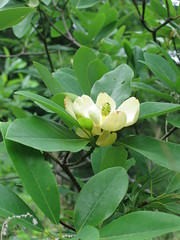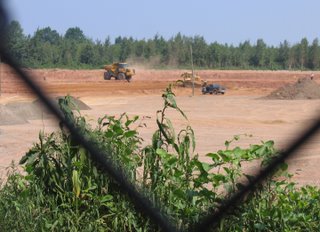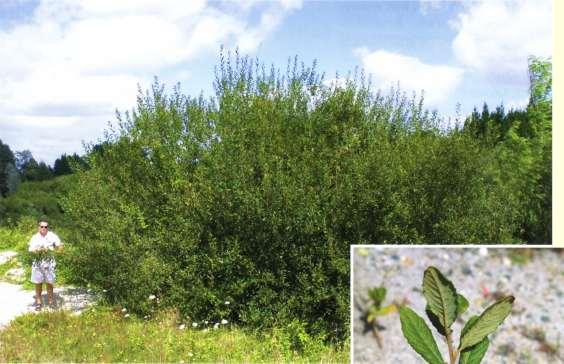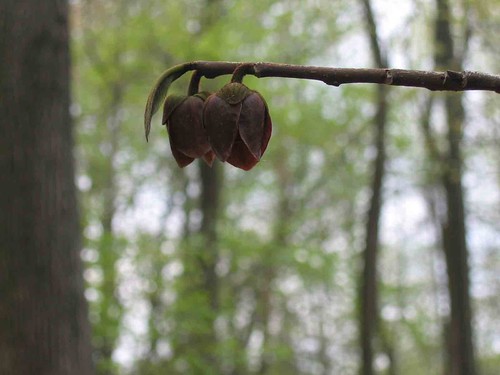Somewhere in Van Cortlandt Park in the Bronx...
 Schreber's aster (Eurybia schreberi {formerly Aster s.})
Schreber's aster (Eurybia schreberi {formerly Aster s.}) This native species has adapted to life on forest floors by being colonial. That is, it reproduces vegetatively, producing a leafy carpet. When it's happy, it will put up flowers, which are white. Easily confused with
large-leaved aster (E. macrophylla), which has light blue blooms. But let's say you missed the boat on the flowers, as I did...what to do? Examine the basal leaves closely. Both species have heart-shaped bases. However, in
E. schreberi, if you spread the bases, there is a rectangular shape between the lobes. Large-leaved is simply heart shaped. Obscure? You bet. That's why we botanists make the big bucks. It's important to differentiate between the two, since Schreber's aster is rare in New York State. Both species are uncommon in NYC.
 Rough-leaved goldenrod (Solidago patula)
Rough-leaved goldenrod (Solidago patula) But that was just a teaser. I knew that plant was there. The "guess what I found" is
this goldenrod. "They are a dime a dozen," you are thinking. Friend, you would be wrong.
Sure, Canada, early, gray, and rough-stemmed are common along roadsides and in old fields. Even
seaside goldenrod isn't limited to its namesake habitat. But
S. patula is one of the fabled "wetland goldenrods", which makes it unusual & rare in NYC. I had never seen it.
I found it quite by accident, as is the case with the best botanical finds. I knew it was a special goldenrod, and so marked the spot to return the next day. I came back armed with my Gleason & Cronquist and Britton & Brown. When it keyed out to
S. patula, it felt as though I had just won a prize - a new find for the city!





















